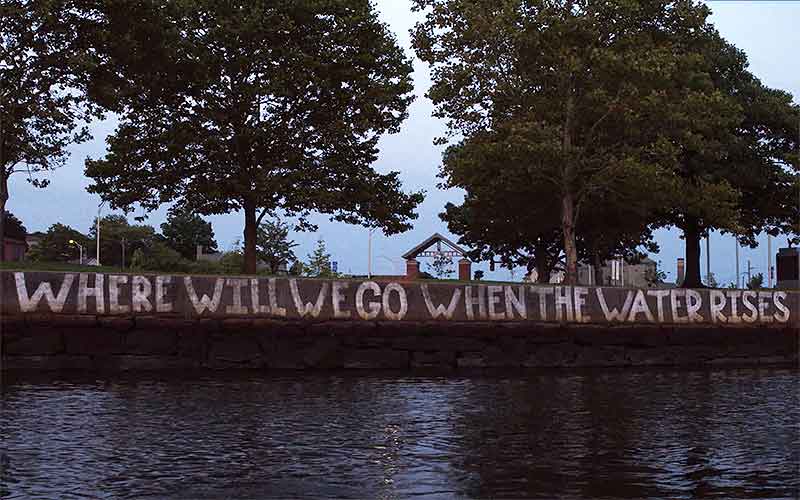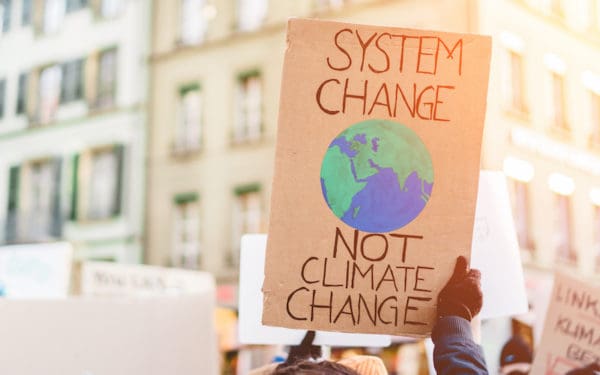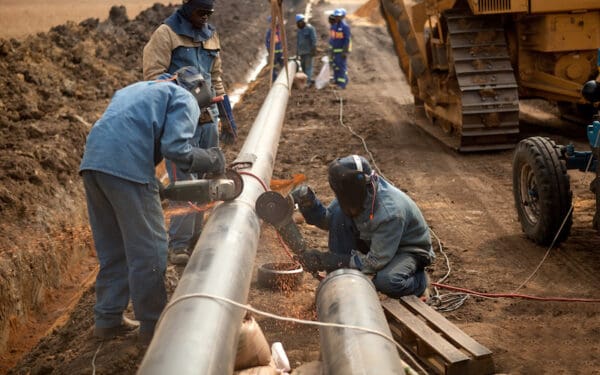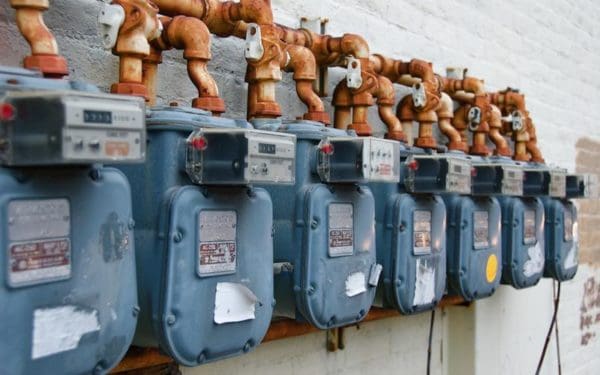
Graffiti along the Hurricane Wall in Providence sends a dire warning that addressing climate change can't wait any longer – a message forcefully reiterated in two recent climate reports.
Heat waves and flooding are putting New England’s people, environment, and economy at risk. Aging infrastructure is increasingly stressed from sea level rise and bigger storms. Our farmers face challenges from shifting growing seasons. Atlantic cod – already dwindling – will disappear and lobster will move out of reach of New England fishermen as waters warm. And faster increases in temperatures here in the Northeast will lead to a return of soot and smog, causing many more hospital admissions, emergency room visits, and deaths across the region.
The climate toll in public health costs and economic losses could reach hundreds of billions of dollars in the Northeast alone.
These are just some of the grim findings from the Fourth National Climate Assessment, released the day after Thanksgiving in the aftermath of the deadliest wildfires in California history. While the Trump administration may have timed the release of the report to bury it, the Assessment is mandated by law, and its release made headlines across the country and the globe.
The Assessment’s findings follow hard on the heels of an equally dire report from the United Nations International Panel on Climate Change, released in October, which warned that we only have 12 years to drastically reduce global carbon pollution if we are to avert climate disaster – much less time than we had thought.
Together, these two reports send a powerful message: We must act more boldly and swiftly to avert climate catastrophe because there’s no more time to waste. But at the 24th meeting of the countries now party to the Paris climate accord this past week (COP24), the Trump administration endured the mockery of the world as it sought to use the forum in Poland to promote fossil fuels.
But there is reason for hope. With a Congress that refuses to address climate change and a president who willfully fails to admit its reality, decisive action at the state and regional levels will and must fill the federal void – and we all play a role in making that happen.
The Midterm Elections Create a Bright Spot in a Dim Forecast
With a change in leadership in the U.S. House of Representatives, we will have a weak but important check on Trump legislative proposals to promote dirty coal, oil, and gas or to roll back basic environmental and public health safeguards. A cohort of young representatives-elect from New England and around the country are touting a “Green New Deal” and demanding that the House enact a comprehensive climate program despite opposition in the Senate and the White House.
Meanwhile, at the state level, Maine now has a governor-elect committed to renewable energy, and Massachusetts, Rhode Island, and Vermont have each re-elected a governor who recognizes – on paper, at least – the need for climate action. In New Hampshire, a new legislature and new executive council appear ready to counter the climate denial of Governor Sununu.
That means New England is poised to lead a bipartisan coalition of states from Maine to Maryland in cutting climate pollution, phasing out dirty fossil fuels, strengthening public health safeguards, and protecting our natural treasures.
We Need Binding Climate Laws in Every State – Now
New England has led the way before. CLF helped to launch the country’s first cap-and-trade program – the Regional Greenhouse Gas Initiative (RGGI) – in 2008. Since its implementation, regionwide emissions from power plants have dropped by more than 40 percent.
So, too, with the Massachusetts Global Warming Solutions Act (GWSA). Passed in 2008, the GWSA sets mandatory limits on carbon emissions in the state, with a goal to cut emissions to 80 percent of 1990 levels by 2050.
RGGI and the GWSA are nation-leading initiatives that are making a difference in New England. But more must be done across the region to slash emissions to net zero by 2050, as the U.N. climate report urges. CLF is pushing for binding climate laws like the GWSA in every New England state because aspirational goals do little to unleash the investment and technological innovation needed to wean our economy off fossil fuels.
What’s more, RGGI and the GWSA rules to date primarily have addressed emissions from electricity only – not from heating systems, buildings, or transportation. Transportation has eclipsed electricity generation as the largest source of carbon pollution in New England. Wide deployment of zero-emission vehicles – from our cars, trucks, and SUVs to our buses, trains, and commercial vehicles – cannot wait.
And we must stand firm against efforts to expand fossil fuel infrastructure, including fracked gas plants and pipelines. Gas is not a bridge to a clean energy future – it’s a roadblock. The more we let Big Gas lull us into greater dependence on its polluting product, the more we turn our backs on the innovation and local jobs that a truly clean energy economy will bring to New England.
Climate Risks Are Here Now – and They’re Going to Get Worse
Even as we redouble efforts to phase out polluting fossil fuels, we must also prepare for the climate impacts we know are coming – indeed, that are already here. The National Climate Assessment reports that adaption efforts are on the rise, but climate change is outpacing planning.
We are seeing this play out here in Boston, one of the nation’s most vulnerable cities in the country to sea level rise, flooding, and storm surge. The city’s 47 miles of waterfront are its first defense, yet extreme storms this past winter put streets in the Seaport district underwater more than once; basements of new buildings there regularly flood during high tides. No mandates require developers to build for climate impacts. That needs to change. Mayor Walsh’s recently released plan for making South Boston resilient is a step in the right direction, but, as we have pointed out, turning this paper plan into a resilient reality will require private developers to pay their fair share.
Corporate polluters must also be held accountable for putting vulnerable communities at risk. Both ExxonMobil and Shell have failed to prepare their fuel storage facilities in New England to withstand storm surge and flooding – despite being two of the wealthiest corporations in the world. This lack of action is both irresponsible and unlawful under the Clean Water Act and other laws, which is why CLF is taking these corporate giants to court.
Inland families and businesses also face urgent climate risks. Seven years ago, Hurricane Irene caused Vermont rivers to overflow their banks, washing out roads and bridges and destroying homes. Those living in mobile homes took the hardest hit – but lacking the means to relocate, many of those residents had no choice but to move back to their homes once the waters receded, despite the risks of future floods.
The costs of adaptation are high, but the price for burying our heads in the sand while the flood waters rise around us will be much higher.




